La Sportiva Lycan II
Test Locations: Gunnison-Crested Butte, Colorado; San Juan County, Utah
Test Duration (so far): 72 miles
Stated Stack Height: 28 mm (heel) / 22 mm (forefoot)
Stated Heel-to-Toe Drop: 6 mm
Stated Features:
- Breathable mesh upper with microfiber reinforcements coated with abrasion resistant material for extra protection
- Injection molded EVA midsole with external structure for shock absorption
- V-groove outsole with Impact Brake System ideal for use in variable conditions where traction is key
- Abrasion resistant microfiber reinforcements in upper shed mud and keep your feet protected
MSRP: $120
Size Tested: US Men’s 12 (EU 45.5)
Stated Weight per Shoe (US Men’s Size 9): 315 g / 11.1 oz
Blister Measured Weight per Shoe (US Men’s Size 12): 365 g / 12.9 oz
Reviewer: 6’1”, 145 lbs
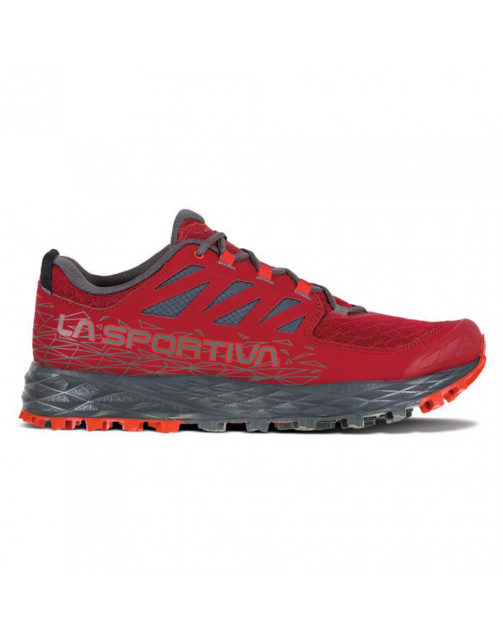
Intro
The Lycan first made its appearance in La Sportiva’s trail running lineup about a year ago, positioned as a softer, roomier, more cushioned shoe for longer-distance runs on moderate terrain. At the time, the Lycan was a bit of a departure from the often stiff, narrow, mountain-specific shoes that make up the bread and butter of La Sportiva’s lineup. I put about 100 miles on the original version of the Lycan last year, and I thought it was a step in the right direction for this relatively new category for the brand — it was definitely more comfortable than shoes like the La Sportiva Bushido II or Akasha for my foot shape, and it felt way smoother on less technical, buffed-out trails.
But the first version of the Lycan also had some sizing quirks, and was decidedly lacking in the traction department. So when I started running in the new La Sportiva Jackal earlier this summer, I thought the Jackal did a much better job of filling the long-distance, all-terrain niche in La Sportiva’s lineup than the Lycan did. Apparently La Sportiva felt the same way to some extent, because this year’s updated Lycan II has a different intended purpose than the original version of the shoe. With the addition of a much more aggressive outsole, La Sportiva now markets the Lycan II as an “ideal mid-distance mountain running shoe for rocky and highly technical terrain.”
That description raises two main questions for me. First, I thought that the original Lycan’s greatest weakness was technical terrain — so is the V2 Lycan really ideal for rocky, technical trails? And second, I’ve always been under the impression that most of La Sportiva’s shoes (Bushido II, Kaptiva, and Mutant, for example) are designed for mid-distance running on mountainous terrain. So what sets the Lycan II apart from the brand’s other shoes?
After my first ~70 miles in the Lycan II, I think that La Sportiva’s description of the shoe is actually fairly accurate, even though not all that much has changed from version one. In my opinion, the Lycan II’s new outsole makes it a better shoe overall than last year’s version — but as always, there’s still some room for improvement to make it a truly “ideal” mid-distance, technical trail shoe.
La Sportiva Lycan vs. La Sportiva Lycan II
As I just touched on, I put about 100 miles on the original version of the Lycan last year. I liked the Lycan’s fit and cushioning for the most part, but I thought that it felt a little slow at faster paces and didn’t have enough traction for anything aside from hard-packed and / or dry, rocky trails. I also had some sizing issues with the original version of the Lycan — a US Men’s size 12 felt too small, but a 12.5 felt slightly sloppy and insecure on technical terrain.
Overall, the Lycan II is very similar to the original Lycan — the upper and midsole are pretty much identical. But the original low-profile, barely-there outsole lugs have been replaced by aggressive, 6mm-deep lugs that look pretty similar to the outsole on the La Sportiva Mutant. The Lycan II is still reportedly built on the same last as the original Lycan, but for a reason I can’t really pin down, the sizing issues I had with version one seem to be pretty much resolved with the Lycan II — a US Men’s 12 fits securely without being overly tight.
The Lycan II is a fair amount heavier than the original Lycan (stated weight of 11.1 oz / 315 g for V2 vs. 9.8 oz / 268 g for V1). While I’m usually a little bummed when the new version of a shoe is heavier than the previous one, the Lycan II’s extra weight actually makes pretty good sense when you consider what changed between versions. The upper and midsole are the same, but the Lycan II’s outsole is way more substantial than the original Lycan’s was — so of course, the Lycan II is going to be a little heavier. For what it’s worth, I think the drastic improvement in traction is worth the moderate increase in weight (more on that later).
Fit
While the Lycan II’s sizing seems better than the original version for my feet, it still doesn’t match up equally with sizing from companies like Altra or Hoka. I consistently have to size up a half or even a full size in all of La Sportiva’s shoes, depending on the model. I usually wear a US Men’s size 11.5, but I had to go up to a 12 in the Lycan II. So if you’re considering buying the Lycan II, it’s even more important than usual to try them on in person, if possible.
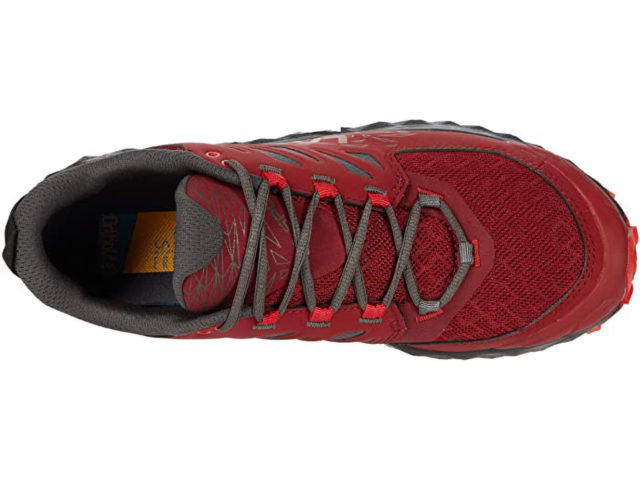
Once I did figure out the correct size, I was pretty happy with the Lycan II’s fit. For reference, I have fairly narrow / low-volume feet with low arches. I like shoes with a snug, secure fit through the midfoot, and enough space in the toe box to allow for some toe-splay on longer runs. The Lycan II definitely feels secure through the midfoot, but the toe box is still a little more tapered than I’d prefer.
The original Lycan felt slightly sloppy in the midfoot and heel, which I think was mainly a sizing issue. As mentioned above, a US Men’s 12 felt a bit small in the original Lycan — but when I sized up to a 12.5, it felt slightly too high-volume and boxy, which resulted in an insecure fit. While the Lycan II is supposedly built on the exact same last as the Lycan, a size 12 Lycan II felt plenty long enough without having any of the sloppiness I ran into with version one.
The Lycan II’s thickly padded tongue makes it easy to cinch down the lacing system and get a secure, locked-down fit through the midfoot without feeling like the laces are going to cut into the tops of my feet. The heel cup also feels slightly narrower and more secure than it did in version one. Again, I think this is mostly just because I was able to wear a half size smaller in the Lycan II — but regardless of the reason, the fit through the heel and midfoot is a definite improvement over the previous version for my preferences.
My only complaint about the Lycan II’s fit is the shape of the toe box. While the toe box does feel slightly wider than shoes like the Hoka One One Evo Speedgoat or La Sportiva Bushido II, it still tapers to a fairly sharp point at the front. So while I feel like there’s enough space for the ball of my foot, the ends of my toes still get pushed together a little in the Lycan II. This hasn’t caused any specific hot spots or other issues so far, but it’s just not quite as comfortable as shoes with a more rounded toe box (like the Altra Timp 2.0 or La Sportiva Jackal), especially on longer runs.
Overall, the Lycan II’s fit reminds me most of the Nike Terra Kiger 5 and Salomon Sense 4 /Pro. The Lycan II is certainly not as roomy as the Altra Timp 2.0, but it does feel more spacious than shoes like the Bushido II or Hoka Evo Jawz, which are designed specifically for technical terrain.
Weight (and Comparisons)
As I touched on earlier in the review, the Lycan II is heavier than the first version of the shoe. But that makes sense to an extent when you consider that the Lycan II is pretty much the same shoe as the original Lycan but with a much more aggressive outsole. Still, the Lycan II’s stated weight of 11.1 oz / 315 g did give me some pause at first. Generally speaking, I don’t really notice a few extra grams here and there for shoes that weigh roughly 10 oz / 284 g or less, but I often think that shoes heavier than that start to feel pretty cumbersome on the trail. The Lycan II is also fairly heavy compared to other shoes in the technical, mid- to long-distance category. For reference, here are some stated weights for several other shoes in roughly the same category (all stated weights are based on a US Men’s size 9):
264 g / 9.3 oz — Nike Terra Kiger 6
275 g / 9.7 oz — Merrell MTL Long Sky
281 g / 9.9 oz — Altra King MT 2
295 g / 10.4 oz — Salomon Cross /Pro
303 g / 10.7 oz — Arc’Teryx Norvan VT 2
306 g / 10.8 oz — Hoka One One Speedgoat 4
306 g / 10.8 oz — Topo Athletic Terraventure 2
315 g / 11.1 oz — La Sportiva Lycan II
323 g / 11.4 oz — Saucony Peregrine 10 ST
It is worth noting that the shoes listed above have varying levels of cushioning, traction, and protection, but all of them are marketed as medium- or long-distance shoes for technical terrain — and any way you slice it, the Lycan II is one of the heaviest shoes in that category. That’s definitely not a plus in my book, but I do think that the Lycan II is a good demonstration of the fact that lighter isn’t always better. The original version of the Lycan was about 1.6 oz / 45 g lighter per shoe than the Lycan II, but it had zero grip on loose or muddy terrain. I’d much rather have a slightly heavier shoe that performs well for its intended purpose than a shoe that’s super light but doesn’t work well.
Would I be happier with the Lycan II if it was an ounce or two lighter but had all the same features? Definitely. But any shoe has to make tradeoffs between traction / protection / durability and weight, and I think that La Sportiva is generally on the right side of that tradeoff with the Lycan II. The Lycan II doesn’t feel as light and nimble as the Nike Terra Kiger 5 on trail, but it isn’t as cumbersome and heavy feeling as I’d worried it might be, either.
Upper
The Lycan II’s upper is identical to the previous version of the shoe, which I think is mostly a good thing. Like its predecessor, the Lycan II uses a fairly standard, breathable mesh for most of the upper, with more substantial synthetic “microfiber reinforcements” around the midfoot area to provide some structure and support. As in version one, the tongue is very well padded but isn’t gusseted, which does cause it to slip off to the side during most runs. This can be a little annoying, but it’s not a serious problem for me.
Aside from that, the Lycan II’s upper drains and breathes well and seems to be very durable. I do think that La Sportiva could get away with a slightly thinner tongue and more minimal midfoot overlays to save some weight, but as is, the Lycan II’s upper does its job well.
Midsole
As with the upper, the Lycan II’s midsole is unchanged from the first version of the shoe. I liked original Lycan’s balance of cushioning and energy return, and the same holds true for the Lycan II.
It doesn’t feel as plush as the Hoka Evo Speedgoat or Altra Timp 2.0, but it does provide plenty of cushion for my preferences — I haven’t had any issues with foot fatigue in the Lycan, even after full days of hiking in the shoe. The Lycan II doesn’t have a rock plate, but the full rubber outsole does provide ample protection from sharp rocks and roots (and a bit less ground feel than the previous version). It’s also worth noting that the Lycan II maintains the moderate, 6 mm heel-to-toe drop of the previous version, which is a lower drop than many other Sportiva shoes and encourages a slightly more neutral, forefoot strike, rather than a heel strike.
Outsole
I’ve already talked about the Lycan II’s new outsole a fair amount, so I’ll try to keep this brief. The outsole is pretty much the only major change between the original Lycan and the Lycan II. The original Lycan had very a very low-profile outsole and used La Sportiva’s hardest / most durable FriXion AT 2.0 rubber compound (also known as “FriXion Blue”). The Lycan II’s outsole uses the same FriXion AT 2.0 rubber compound, but gets upgraded to a much more aggressive lug pattern that looks nearly identical to the one used on the La Sportiva Mutant, Tempesta GTX, and Crossover 2.0 GTX. The new outsole has widely spaced, 6mm-deep lugs that provide way more traction on muddy or loose terrain than the original Lycan’s outsole did.
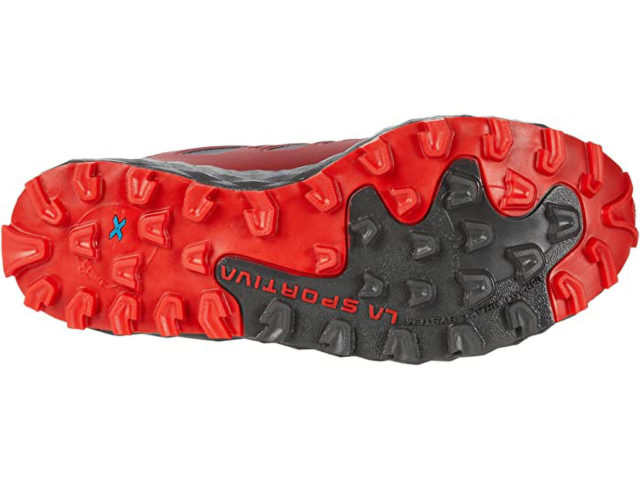
Overall, I think the Lycan II’s new outsole is a major improvement. The original Lycan provided just enough traction for runs on hard-packed trails or dry rocks, but struggled on anything loose or wet. In contrast, the Lycan II has ample grip for just about every type of terrain I usually encounter on runs. Its only shortcoming is on especially slick, wet terrain — because the Lycan II uses La Sportiva’s hardest outsole compound, it doesn’t stick to wet rocks or roots very well. The upside is that the Lycan II doesn’t feel as sluggish / inefficient as I think it would if its outsole used a softer, grippier rubber compound. Overall, the Lycan II’s outsole makes it a much better shoe for the mid-distance, technical mountain running that La Sportiva claims the shoe is designed for.
On Trail
I’ve been using the Lycan II for a mix of shorter runs (up to about an hour) and full days of hiking over the last few months. I’ve used the Lycan II on smooth, non-technical trails, steep and rocky ones, and loose, off-trail terrain. While I’ve only put about 60 miles on the Lycan II so far, I’m pretty confident in saying that the fairly minor changes La Sportiva made to the outsole and sizing make the Lycan II a much better shoe than the previous version — especially on technical terrain.
The original version of the Lycan felt fairly smooth and comfortable on non-technical trails, but it’s slightly boxy-feeling fit and inadequate traction made it feel a bit unstable / not secure on technical trails. And while I liked how the Lycan felt on non-technical trails, it wasn’t my favorite shoe for that type of terrain by any means — the Altra Timp 2.0 was more cushioned and comfortable, while shoes like the Nike Terra Kiger 5 felt much more efficient at faster paces. So while I thought the Lycan was a solid shoe, it didn’t really stand out — at least not for my shoe preferences.
With the Lycan II, I think La Sportiva did a good job of tweaking a fairly average shoe to make it way better for a slightly different purpose. The Lycan II feels secure and grippy on technical terrain both on and off trail. The Lycan II does feel a bit heavy compared to shoes like the Nike Terra Kiger 5 or Salomon Sense 4 /Pro, but it also offers much better traction on extremely steep, loose terrain than either of these shoes.
As with many La Sportiva shoes, the Lycan II prioritizes security and traction over minimum weight. I think that’s just fine, but it does narrow down the type of runs for which I think the Lycan II is best suited. If I’m trying to go especially fast, I usually gravitate towards a lighter shoe like the Nike Terra Kiger 5 or Salomon Sense 4 /Pro. But if I’m not too concerned about the pace and know I’ll be on lots of loose, steep terrain, the Lycan II has become my go-to option. I don’t notice the shoe’s extra weight at slower paces, and the added traction and security make the extra ounces well worth it in those scenarios. I still think that the Lycan II needs to lose a little weight to make it a truly “ideal mid-distance mountain running shoe for rocky and highly technical terrain,” but it’s certainly better for that type of running than its predecessor.
So for the most part, I think the answer to my question of whether the Lycan II is actually good for technical terrain is yes. But how does that make it any different from La Sportiva’s four or five other shoes that are supposed to be good for technical mountain running? After running in both the Lycan and the Lycan II, I think that the answer is that the Lycan II stands out precisely because the first version of the shoe wasn’t designed for technical mountain running, and then they pivoted the design from there, but with a similar overall platform. Shoes like the La Sportiva Bushido II or Kaptiva feel extremely secure on technical terrain, but I found them to be so stiff and protective that they feel a little slow, clunky, and not all that comfortable on non-technical trails.
The original Lycan was much softer, wider, and more flexible than most of La Sportiva’s other shoes, which made it feel way more efficient and comfortable on smooth trails. The Lycan II has the same softer cushioning, more flexible midsole, and roomier fit as the first version of the shoe, so it still feels fairly efficient on non-technical trails when compared to shoes like the Bushido II. I was a little concerned that the Lycan II’s bigger lugs would feel grabby and slow on smooth trails, but so far they don’t feel noticeably different from the much lower-profile outsole of the first version on non-technical terrain. I think this is probably a byproduct of the harder rubber compound La Sportiva uses for the Lycan II’s outsole — the lugs are certainly deeper than the previous version, but the hard rubber helps them feel less grabby than other aggressively lugged shoes with softer rubber compounds like the Inov-8 X-Talon 212.
The Lycan II’s refined sizing and much grippier outsole also make it far more secure for technical terrain than the original version of the shoe. So while I thought that many of La Sportiva’s technical mountain running shoes were only good for technical terrain and nothing else, the Lycan II feels more sensible on a much wider variety of terrain. It also feels more comfortable than shoes like the Bushido II on longer outings thanks to its softer cushion and more accommodating fit. I’d still probably choose the Bushido II over the Lycan II for rock hopping over talus fields because of the Bushido’s even more secure, locked-down fit and superior protection — but for just about everything else, the Lycan II is plenty secure and much more comfortable for my preferences.
Durability
I’ve only put about 72 miles on the Lycan II so far, so obviously I’ll have to run in the shoe quite a bit more before I can speak to its long-term durability. But so far, the Lycan II is holding up just as well as I’ve come to expect for a La Sportiva shoe. The upper and midsole are well constructed and aren’t showing any signs of wear so far. The deeper lugs on the outsole are starting to wear down slightly in particularly high-abrasion areas, but not any more than I’d expect for a shoe with 6 mm lugs (and better than shoes with similar outsoles that use softer rubber). As I’d expect, given the Lycan II’s relatively heavy weight, the Lycan II’s construction feels pretty solid overall — I fully expect it to hold up to several hundred miles of use on rough terrain. I’ll update this section down the road as I put more miles on the shoe.
Who’s It For?
Based on my experience with the Lycan II so far, I think it’s a solid shoe for mid-distance mountain running — as advertised.
It wouldn’t be my top choice for racing because of its fairly high weight, but I think it’s a great shoe for runs up to a few hours long that mix smooth trail with rocky, technical sections and even some off-trail terrain. If you like the security and traction of shoes like the La Sportiva Bushido II but want something a little wider, with softer cushioning, and that can handle non-technical trails as well as rough mountain terrain, the Lycan II is definitely worth checking out.
Bottom Line
In my opinion, the La Sportiva Lycan II is a solid update to what was a fairly average shoe. The original Lycan wasn’t my favorite shoe for non-technical trails, but it also wasn’t great on technical terrain. The Lycan II still feels pretty comfortable and efficient on smooth trails, but it also offers traction and stability when the trail includes lots of rocks, roots, and other off-camber obstacles. It’s wider, more flexible, and more cushioned than most of La Sportiva’s mountain running shoes, which I think makes it much more comfortable for longer mountain outings on mixed terrain. And while I think it would be a better shoe if it was a bit lighter, I think La Sportiva isn’t too far off when they claim that the Lycan II is an “ideal” shoe for mid-distance mountain runs.

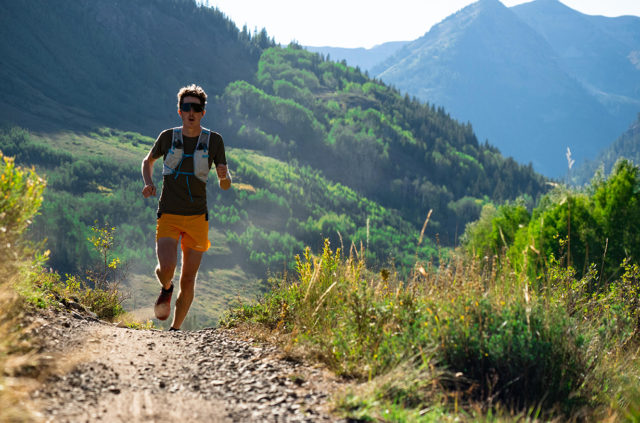
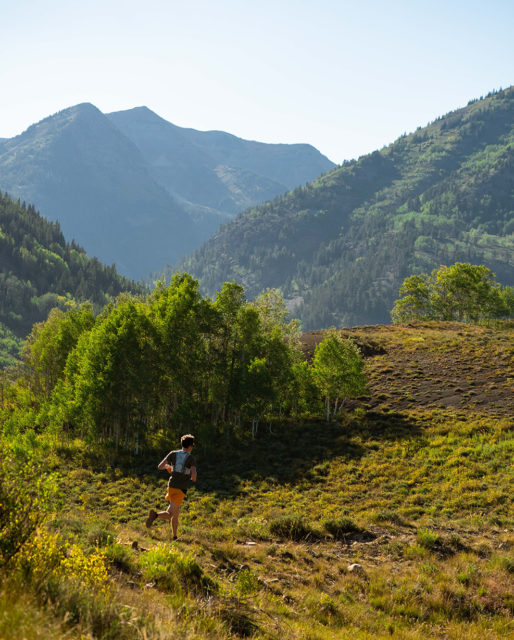
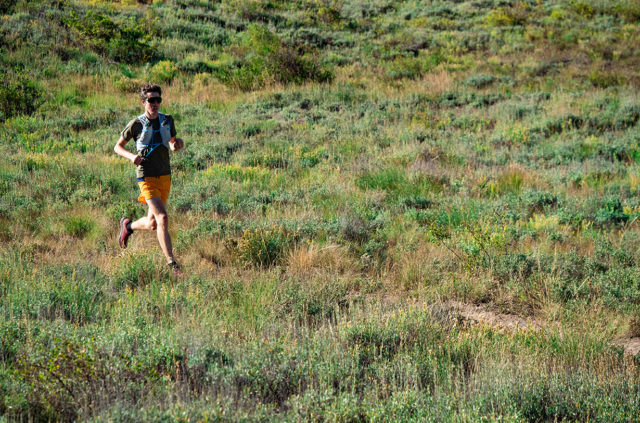
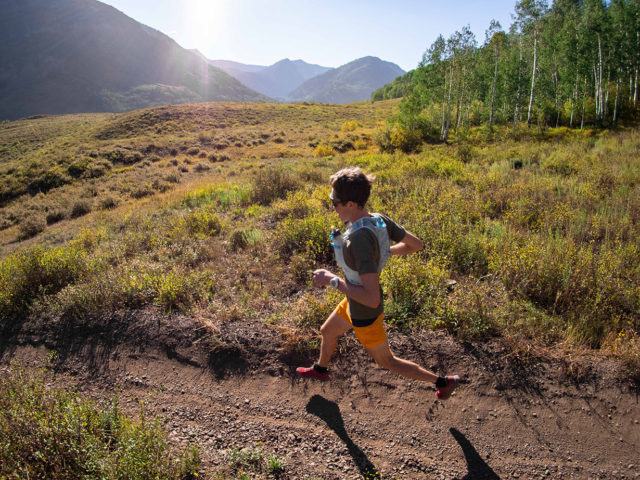
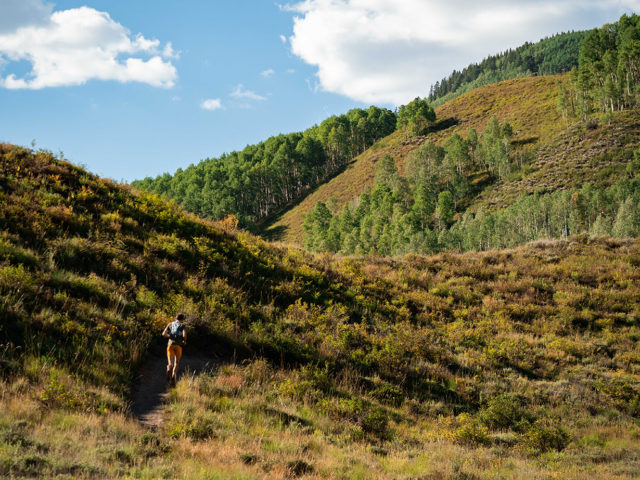
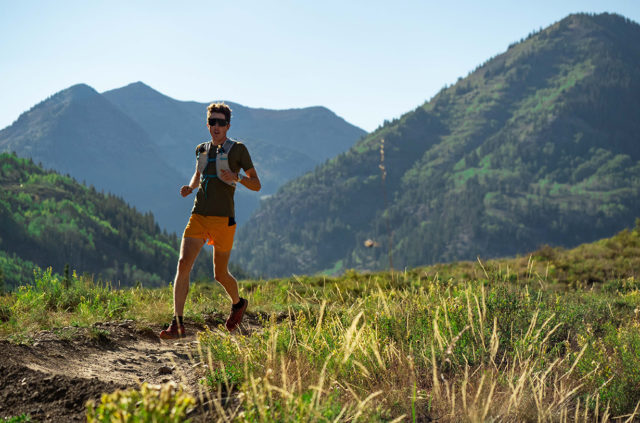
Great review, Gordon. Can you give a little more insight about the width of the toe box? I have the TX3s in size 11 that fit great, but I picked up the Bushido II in size 11.5 and the toe box is narrow enough that I’m getting pain on the outside of the ball of my foot even on shorter runs. How does the width of the Lycan II compare? Like if the Bushido II is a 1 and the TX3 is a 10, would you say the Lycan II is closer to a 2 or a 5 (if that makes any sense whatsoever…)? Thanks!
Hey Tim,
I haven’t tried the TX3’s, but I definitely thought that the Lycan felt much roomier than the Bushido — the Lycan II is built on La Sportiva’s widest last, while the Bushido II has a “performance” (i.e. narrow) fit. I tested a pair of Bushido II’s in an 11.5, and they felt a bit too tight, especially in the toe box. The Lycan II in a size 12 had a much wider and higher volume fit throughout, particularly in the toe box. Obviously they were different sizes, so a little hard to compare directly, but the Lycan II is definitely a wider shoe. Given that the TX3 is an approach shoe, I’d expect the Lycan II to be wider / more roomy if anything (running shoes often are), but that’s just a guess since I haven’t personally tried the TX3. Hope that helps!
The TX lasts are still wider than the Lycan’s last. But it’s been a while since I threw a Lycan 2 on so I can’t give you a good # comparison that you asked about.
I am typically a 9 or 9.5 for example my Merrel Nova 2s I’m a 9 but in my La Sportiva Akashas I’m a 43. Love how my Akashas fit, can anyone compare the Lycan 2 to the Akashas as far as fit goes? I cant seem to find them in stock at any retail stores to try them on and even online inventory seems low.
Hey Chris-
It’s been a few years, but I did run in the Akasha for a little while — the Lycan II runs a little bigger size-wise (I was a US 12.5 in the Akasha, 12 is plenty big in the Lycan). The Lycan II also feels a bit wider and higher volume through the midfoot and heel. Hopefully that helps!
Gordon thanks, I think I’ll size down half a size and give that a go. Appreciate the input.
Incredibly slippery on wet rocks!
Thanks for the good review Gordon. I thought I’d add my experience to your comment that the Lycan 2 “doesn’t stick to wet rocks or roots very well”.
I’d go a far as saying these are the slipperiest shoes (of any kind, not just trail shoes) I’ve ever worn when it comes to wet /damp / mossy rocks. The only way I can explain it is that it feels like walking on a wet road that has oil spilt on it, they break traction completely and without warning. They are dangerously bad in this regard.
I’ve had these shoes for several months, and really enjoyed them over the summer – they are comfy and provide good grip in the dry or in mud / soil / leaf litter. Now that we’re heading into Autumn (southern hemisphere) and the ground is damp, they are unusable on rocky ground. I’m off to buy another pair of shoes today. I’m really surprised that La Sportiva (who’s gear I’m usually a fan of) produced a shoe with such a glaring issue.
Cheers, John.
Love the shoe. Will be wearing them on a marathon in Montana June 2022